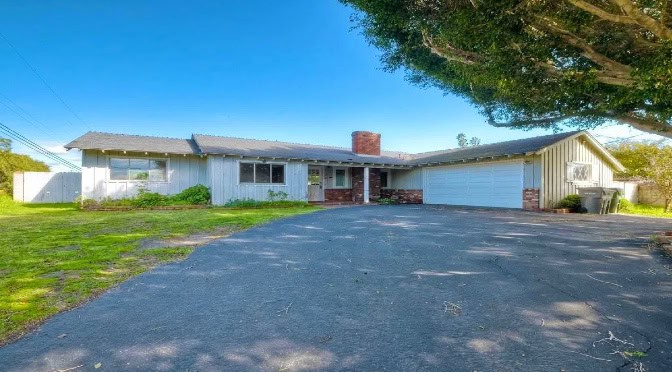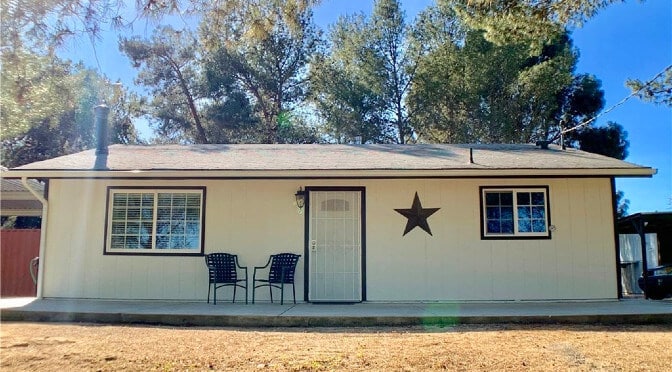
Bridge Lending: Guide to Short-Term Real Estate Financing
Bridge lending provides fast and flexible financing for real estate investors and homeowners. This guide covers all the basics of bridge loans, from their fundamental concepts to practical applications in today’s real estate market.
What Is Bridge Lending?
Bridge lending offers short-term financing solutions that help real estate investors and property buyers bridge the gap between selling one property and purchasing another. These specialized loans offer quick access to capital when waiting for traditional financing isn’t an option. Real estate opportunities often require fast action, whether the property is going to be an investment or a primary residence.
Key Benefits of Bridge Lending:
- Quick access to capital for property purchases: Bridge loan proceeds can be available as soon as 3-5 days for investment and within 2 weeks for an owner occupied bridge loan purchase
- Flexibility to act quickly in competitive markets: Provide a more competitive offer without needing to first sell a property as a contingency.
- Ability to secure a property before selling an existing one: Avoid the need to sell a property first and find temporary housing prior to purchasing the new property
- Short-term financing without long-term commitment: Bridge loan terms are usually up to 11 months for primary residences and 12-24 months for investment property
How Bridge Lending Works in Real Estate
Bridge lending operates differently from traditional mortgages, offering unique advantages for real estate investors. When you secure a bridge loan, you’re typically borrowing against your current property’s equity to finance the purchase of a new property. This process allows investors to:
- Access equity without selling their current property
- Move quickly on new investment opportunities
- Avoid missing out on profitable deals due to timing constraints
- Bridge the financial gap until permanent financing is secured
Types of Bridge Lending
Understanding the various bridge lending options helps investors choose the right financing solution:
- Residential Primary Residence Bridge Loans: Owner occupied bridge loans are designed for homeowners who want to leverage the equity in their current residence to help purchase their new primary residence prior to selling their current home.
- Investment Property Bridge Loans: For investors needing temporary financing to acquire a new property while waiting for an existing property to sell.
- Commercial Bridge Loans: Designed for property purchases including office buildings, retail or other commercial property. Once the property is secured, the investor can begin refinancing into permanent financing.
- Construction Bridge Loans: Ideal for developers and investors financing new construction projects.
- Fix and Flip Bridge Loans: Specifically structured for investors who purchase, renovate, and sell properties for profit.
Bridge Lending vs. Traditional Loans – Primary Residence
Bridge loans are only a short-term option. Homeowners must understand that they will be required to either sell the property or refinance into a long-term traditional mortgage in the near future. Bridge loans are approved and funded much more quickly than traditional loans, allowing the borrower to capitalize on a short-term opportunity.
Bridge loans are more focused on the value of the property and the owner’s equity in the property rather than income and credit. For residential bridge loans, borrowers are not required to meet the same strict debt to income ratio (DTI) to qualify as with a traditional loan. This is especially important for borrowers with significant equity in their home but relatively lower levels of income (retired and people not currently working).
Bridge loans do have higher interest rates compared to long-term financing but the bridge loan is only a short-term solution.
In some scenarios, a double bridge loan may be available and required for the borrower. The first bridge loan is secured against the existing property to pull funds out for a down payment. A second bridge loan is secured against the new property to close on the purchase. In many situations, a borrower cannot qualify for two loans simultaneously with a traditional lender due to DTI requirements. Residential bridge loans are a special exception that do not require qualifying based on DTI.
North Coast Financial specializes in providing bridge lending to homeowners who need flexible, short-term financing to purchase a new primary residence and sell an existing residence. Our bridge loans ensure that homeowners have the capital they need for a smooth transition from one property to the next.
Smart Ways to Use Bridge Lending for Real Estate Investment
Successful real estate investors leverage bridge lending in several strategic ways:
- Quick Property Acquisition: Secure desirable properties before competitors by accessing immediate financing.
- Portfolio Expansion: Grow your real estate portfolio without waiting for existing properties to sell.
- Market Timing: Take advantage of market opportunities regardless of your current property’s sale status.
- Renovation Projects: Fund property improvements to increase market value before securing long-term financing.
Bridge Lending Rates and Terms
Understanding bridge lending rates and terms is crucial for making informed financing decisions.
- Higher interest rates compared to traditional loans
- Loan terms typically ranging up to 12 months
- Monthly payments are required until loan is paid off
- Loan origination fees vary based on loan amount
- Standard 3rd party costs are required (escrow, title, notary, recording)
Bridge Lending Requirements
Bridge lending has far fewer requirements than traditional lending but the main two requirements will be scrutinized by the bridge loan lender:
- Sufficient Equity in Collateral Property: The borrower must have sufficient equity in the existing property or a substantial down payment if the bridge loan is being secured solely by the new property being purchased.
- Reasonable Exit Strategy: The borrower must have a reasonable exit strategy for the bridge loan which is typically either selling a property or refinancing the bridge loan into long-term financing. The bridge lender will want to see that the borrower has the necessary income and credit scores required to obtain a long-term permanent loan in the near future.
Evaluating Bridge Lending: Advantages and Disadvantages
Key Advantages
- Rapid access to investment capital
- Flexible short-term financing solutions
- Minimal documentation requirements
- Quick closing process
Potential Disadvantages
- Higher interest rates than traditional loans
- Short repayment time frames
- Need for clear exit strategy
- Property sale timing risks
How to Secure Bridge Lending
Step-by-Step Process
- Property Evaluation: Determine the current property value and existing equity.
- Calculate Needed Financing: Determine needed bridge financing based on estimated purchase price and available cash for down payment.
- Bridge Loan Lender Selection: Choose a specialized bridge lending provider with proven experience in bridge lending, competitive rates and terms, and a professional reputation.
- Application Submission: Prepare and submit application, financial statement, property documentation and any other needed documentation.
- Get Property Under Contract, Close Bridge Loan: Obtain an accepted offer from the seller and begin the bridge loan process
Bridge Lending Repayment Strategies
Due to the short-term of bridge loans, the borrower needs to have an exit strategy in mind prior to obtain the bridge loan. The most common exit strategies are a traditional refinance or selling the property.
- Refinance with Traditional Loan: Many borrowers choose to refinance into a long-term traditional loan with a 15 year or 30 year amortization schedule. This gives the borrower lower interest rates and a longer term to repay the loan.
- Sell Property: If the borrower secured a bridge loan against their existing property, they can simply sell this property and the sales transaction will pay off the bridge loan.
Alternatives to Bridge Lending
While bridge lending offers unique advantages, investors should consider all financing options. When comparing financing solutions, the borrower should the various factors including, interest rates, term length, documentation requirements, closing speed and flexibility.
Traditional Financing Options
- Traditional mortgages: Will provide the lowest interest rates and longest repayment terms but the approval and funding process take much longer than bridge lending. Debt to income ratio qualification will be required.
- Home equity loans and HELOCs: Allow a property owner to borrow against the equity in the property but processing time can take over a month. DTI qualification will be required. Interest rates will lower than bridge lending but they will have strict income and credit qualification. If the lender is told the purpose of the loan is for a short-term and the subject property will be sold soon, they may not proceed with the loan.
Conclusion: Making the Right Bridge Lending Decision
Bridge lending represents a powerful tool for real estate investors and homeowners needing quick, flexible financing solutions. Success with bridge lending requires:
- Significant existing equity in real estate
- Clear understanding of terms and conditions
- Reasonable exit strategy
- Relationship with reputable bridge lender
Understanding bridge lending and its applications can give you a significant advantage in today’s competitive real estate market. Consider your investment goals, timeline, and financial situation when deciding if bridge lending aligns with your real estate strategy.
Contact North Coast Financial for Bridge Lending in California
North Coast Financial specializes in fast and flexible bridge lending solutions for California real estate. Whether you’re a homeowner or a seasoned real estate investor, we can provide the needed bridge financing to help you achieve your current real estate goals. Contact us today to learn more about how we can help provide financing for your next property acquisition.
Recent Bridge Loans Funded by North Coast Financial
Bridge Loans Resource Guide
California Bridge Loan Request
We will contact you to review the loan scenario and provide a quote.




